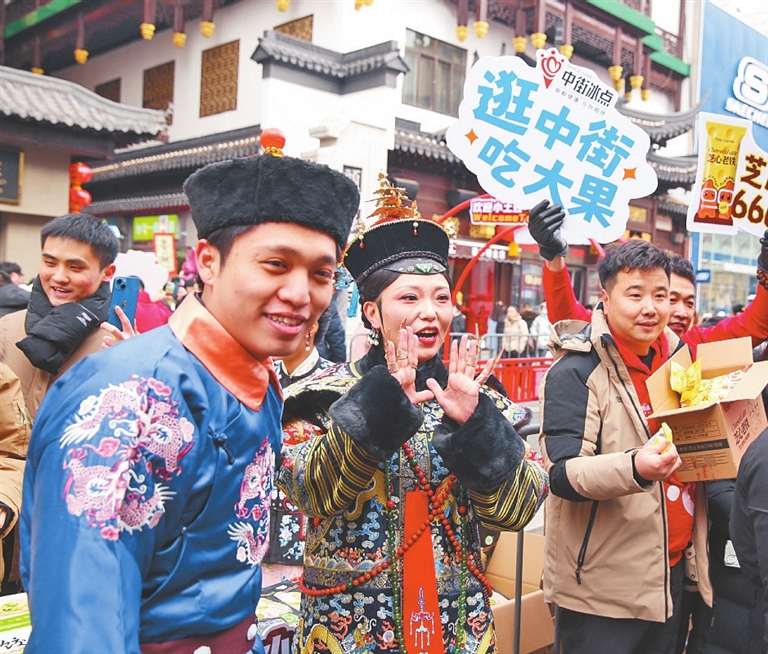

NUMEROUS short video clips, shared by local authorities on social media platforms, have garnered widespread attention from Chinese netizens. These videos are strategically crafted to translate online engagement into tourism revenue. Notably, hashtags such as “local culture and tourism bureaus going crazy,” “trying to outperform each other,” and “open to online suggestions to promote themselves” have trended on several platforms. This surge in online activity stems from efforts to replicate the success of Harbin, the capital of China’s northeastern Heilongjiang Province, which has emerged as a viral sensation and a top winter destination. The city’s breathtaking icy landscapes and the warm hospitality of its locals have propelled it to become the most talked-about and sought-after travel spot in China this winter. The impact of this is evident as within the first four days of this year, 55 tourism-related topics about Harbin trended on Sina Weibo, collectively amassing over 1 billion views. Similarly, platforms such as Douyin (China’s TikTok) and Xiaohongshu have witnessed numerous trending hashtags centered on how Harbin has pampered travelers with hospitality shown by both locals and authorities. During the three-day New Year holiday, Harbin attracted more than 3 million visitors, generating a record-breaking 5.9 billion yuan (US$830 million) in tourism revenue. A digital warfare The momentum generated by Harbin’s success has spurred a cutthroat competition among other regions to vie for online attention, particularly on Douyin. This was evident when Henan’s Culture and Tourism Department posted 23 videos Jan 9, following it up with an additional 112 videos over the next four days to spotlight the province’s tourist attractions. This strategic move resulted in nearly 1 million new followers, with the hashtag “How many videos have the Henan culture and tourism authorities posted on Douyin?” gaining traction. Among the various posts aiming to attract visitors, videos of bare-chested male models at the Yuntai Mountain scenic spot in Henan have piqued widespread interest among netizens, sparking conversations about visiting the province to catch a glimpse of “the hot guys.” Following suit, Shanxi and Hebei provinces have aggressively entered this digital battleground. The former inundated Douyin with 57 videos within a 10-hour span, while the latter boldly proclaimed themselves the “king of the competition,” inciting a digital war to attract visitors. Subsequently, they posted 75 videos (the maximum allowed by Douyin within 24 hours) the following day, all tagged with the hashtag “Hebei is king of the competition,” prompting a humorous plea from Douyin for them to “take a rest.” Not to be outdone, the Culture and Tourism Department in Shandong Province delved into the competition, albeit with a slightly controversial approach. While attempting to piggyback off of Harbin’s fame, their effort brought mild embarrassment for locals, who felt the authorities were trying too hard by calling Shandong “Dongshan.” Nonetheless, these endeavors bore fruit, as evidenced by a notable surge in followers for Henan, Hebei, and Shandong’s culture and tourism authorities on Douyin. These actions are reflective of a larger trend, where short-video platforms are becoming crucial for promoting tourism resources, according to Deng Ning, vice-dean of Beijing International Studies University’s School of Tourism Sciences. With nearly 1.08 billion internet users and 1.02 billion short-video users in China, these platforms possess the potential to elevate lesser-known destinations into travel hotspots, thanks to the huge online traffic and the attention generated. Such unlikely hot destinations in the past year included Shandong’s Zibo, known for its barbecue food, and Tianjin, whose retirees captured in viral videos as they dived from local bridges into Haihe River. Deng aptly points out that such cities gain prominence due to the appeal of crowded spaces, especially as people seek social interaction in the aftermath of prolonged COVID-19-induced social distancing. He emphasizes that these platforms provide the quickest and easiest route for local authorities to emulate the successes of other “online celebrity cities.” However, there's a cautionary note that in a landscape saturated with similar content, netizens can quickly tire of redundant posts. Celebrity power With an increasing number of provinces vying for attention in the tourism industry, the involvement of celebrities in promoting local attractions has become a trend. Notably, showbiz idols such as Wang Yibo, Zhao Liying, and Xiao Zhan are effectively leveraging their influence to bring attention to their hometowns, creating a ripple effect in the industry. Wang’s video promoting his hometown of Luoyang, Henan, gained significant traction. Similarly, Zhao showcased her roots in Hebei, and Xiao’s promotional video for Chongqing trended on Douyin, amassing a staggering 120 million views. Hunan Province has harnessed the influence of its famous television station, Hunan Satellite TV, to enlist the support of renowned personalities, regardless of their provincial origins. This collaborative approach has seen figures such as composer Tan Dun, singers Liu Huan, Li Yuchun, and Zhou Bichang, and TV hosts He Jiong and Wang Han, actively promoting the province’s diverse tourist attractions. The impact of these promotional efforts is evident in the sentiments expressed by individuals like Wu Jiahui, an undergraduate from Luoyang, who expressed pride in seeing Wang Yibo championing their city. “I’m happy to see my hometown getting the attention it deserves,” she said. However, not all responses have been uniformly positive, as voiced by Zhang Dan, a postgraduate student from Changsha. “I’m a fan of Wang Yibo, but I’m not going to visit Luoyang anyway,” she said. Local tourism officials have also joined this promotional wave, employing creative tactics to attract visitors. From Wang Dianyou’s dance performance at Harbin Ice and Snow World to Peng Zhenhua’s engaging display in Zhangjiajie, these initiatives have generated significant online interest, despite some initial mixed reactions. Equally noteworthy is the participation of netizens, who have added an element of humor and competition to the promotional landscape. Their playful exchanges and exaggerations not only entertain but also serve as effective marketing tools. Wei Changren, founder of tourism-focused news outlet btiii.com, confirmed the value of such initiatives, underscoring the importance of creative branding in making a city a popular tourist destination. He advocates for a focus on unique strengths and attributes, emphasizing the need for cities to differentiate themselves to attract repeat visitors. Wei also stresses the essential role of enhancing tourism services and infrastructure. To sustain long-term success, local authorities need to focus on creating welcoming environments for travelers, he said.(China Daily) | 
